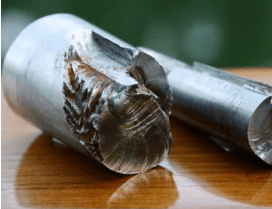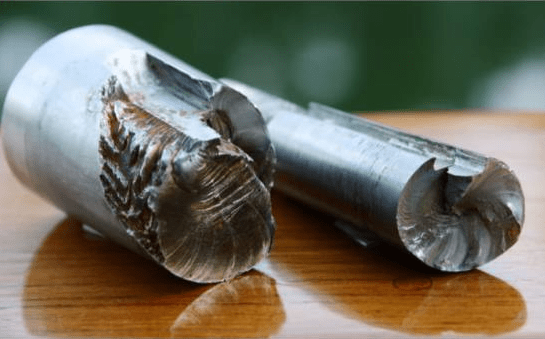Metal Fatigue and Its Prevention


![]() Metal fatigue causes the detail wear, which is the deformation of the metal surface resulting from frictional forces’ action. There are two types of wear, depending on the type of friction.
Metal fatigue causes the detail wear, which is the deformation of the metal surface resulting from frictional forces’ action. There are two types of wear, depending on the type of friction.
- Wear of the first kind (abrasion) is accompanied by the separation of metal particles and their weight loss.
- Wear of the second kind (crushing) affects the shape and size of a metal product. Both types of wear friction occur simultaneously.
Metal fatigue occurs when one metal is rubbing against other metal. A distinction is made between dry wear (lug and track pin) and lubricated wear (bearings and gears). In the first case, wear is determined by the properties of abraded metal surfaces; in the second, it is also determined by the lubricant properties. Producing more durable metal alloys prolongs the work of detail. Innovative companies turn to metinvest to obtain the best quality raw metals and alloys.
The wear of parts of tractors and agricultural machines, for instance, mostly occurs during the friction of metal in an abrasive environment (soil), where the process of cutting metal with solid particles of abrasive soil plays an important role. Various designs of laboratory machines are used to test metals for wear, but all of them give only approximate results. Therefore, the best way is to test the parts for wear under operating conditions.
Types of metal fatigue
Changing the characteristics of used parts is a process that results from their interaction and use. Some of the fatigue changes occur even during normal operation of the mechanisms. Such changes are called natural and are set when the node is started.
There are two types of unnatural fatigue of metal parts:
- Normal. It is the result of improper operation, installation violations. It leads to gradual equipment failures and deterioration of the technical condition of the object.
- Critical. As the numerical values of normal fatigue, wear, and tear grows, objects and mechanisms become completely unusable.
All reasons why metal fatigue occurs can be divided into three groups:
- Physical/mechanical. It is a consequence of high loads and the effect of one part’s friction force on another. The adjoining parts are abraded, and cracks, snags, roughness appear on their surfaces.
- Thermal/molecular mechanical. Parts that work together experience overheating due to high speeds and specific pressures. Due to a sharp increase in temperature, seizure, and subsequent destruction of molecular bonds of particles inside the metal occurs. Parts warp and melt.
- Chemical/corrosive. It is observed on the surface of metal parts as a result of exposure to water, air, and chemicals. The corrosion processes take place. To avoid this, it is recommended to use an anti-corrosion protective coating for metals.
It should be understood that the cause of wear and tear of parts is not one single factor, but several interrelated ones.
How can worn parts be restored?
Basic methods for restoring parts are:
● Restoration by mechanical and locksmith processing. Suitable for parts with flat contact surfaces. The worn-out place is processed (ground) and transferred to the next size. Machining is used separately and as a final step in other methods.
● Refurbishment by welding and surfacing. The size of damaged parts is restored by surfacing with strong metals.
● Restoration of a part by metallization. The worn part’s size is restored by applying molten metal with a thin (from 0.03 mm) and thick (over 10 mm) layer.
● Electroplating (chromium plating). The chromium application in a thin layer (up to 1 mm) provides resistance to mechanical abrasion. The method is similar to metallization but less versatile. Remanufactured parts do not withstand dynamic loads.
● Strengthening and bonding with plastic. Plastics make it possible to obtain fixedly connected units, as well as stop metal fatigue. Unlike previous methods, metallic parts can rarely be subject to plastic restoration. The cost of repairs with plastics is significantly lower. With the help of modern casting materials, it is possible to restore a part of complex and non-standard geometry.


